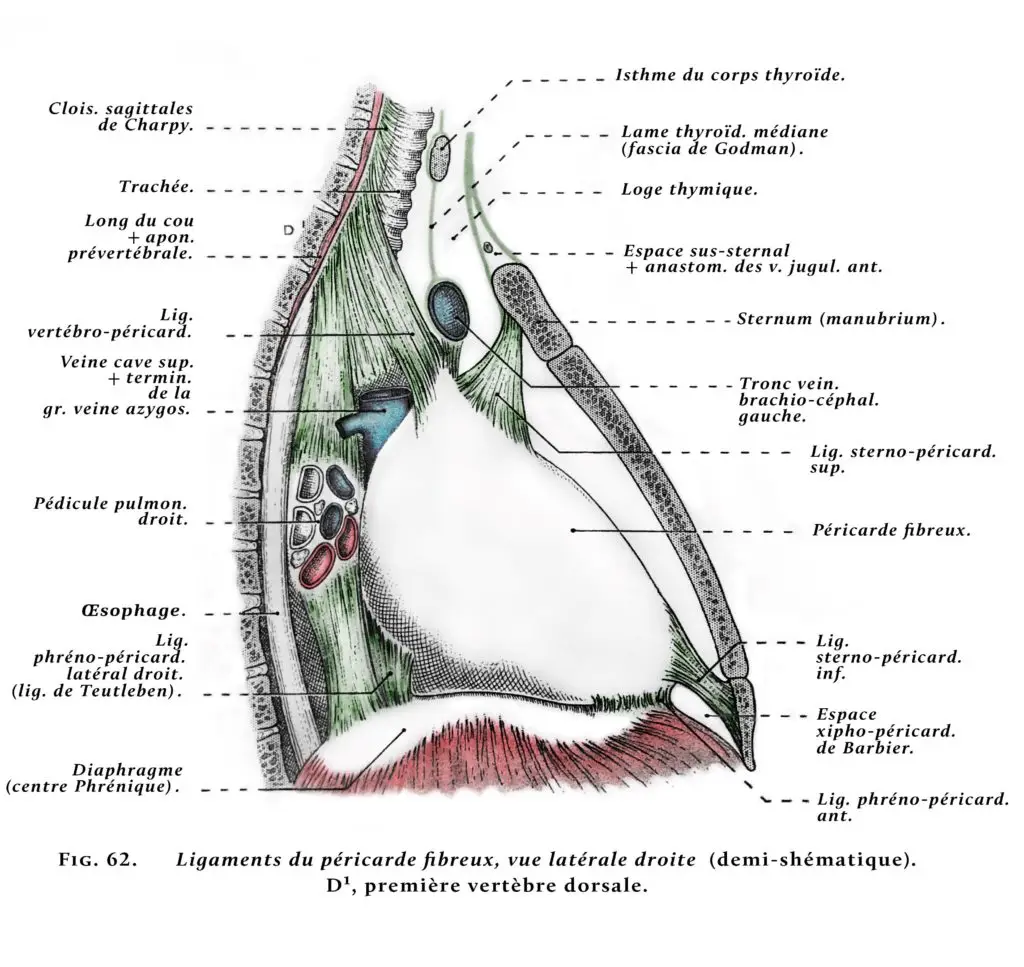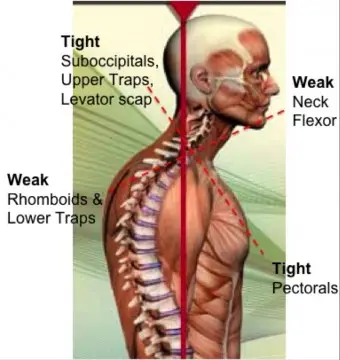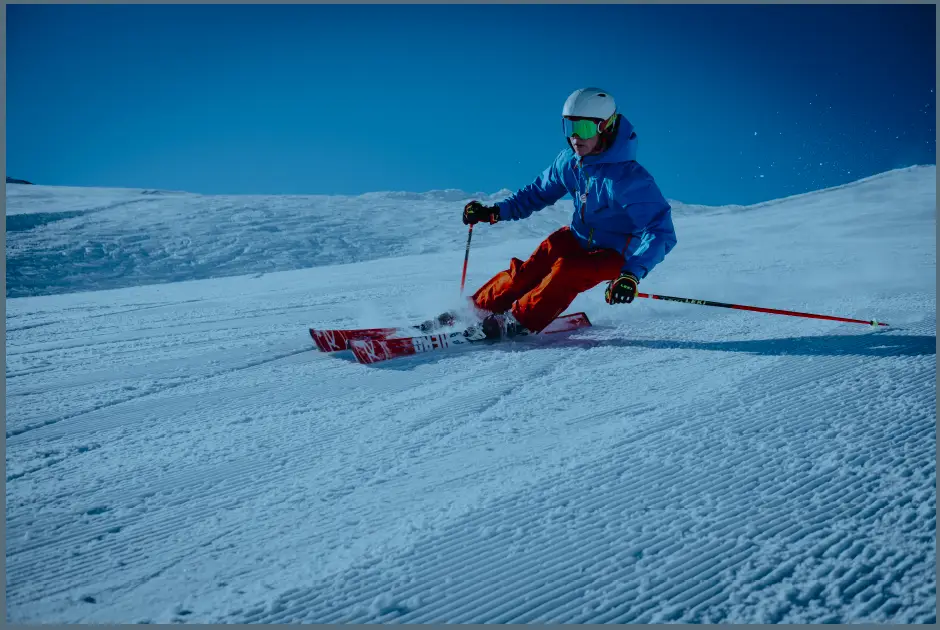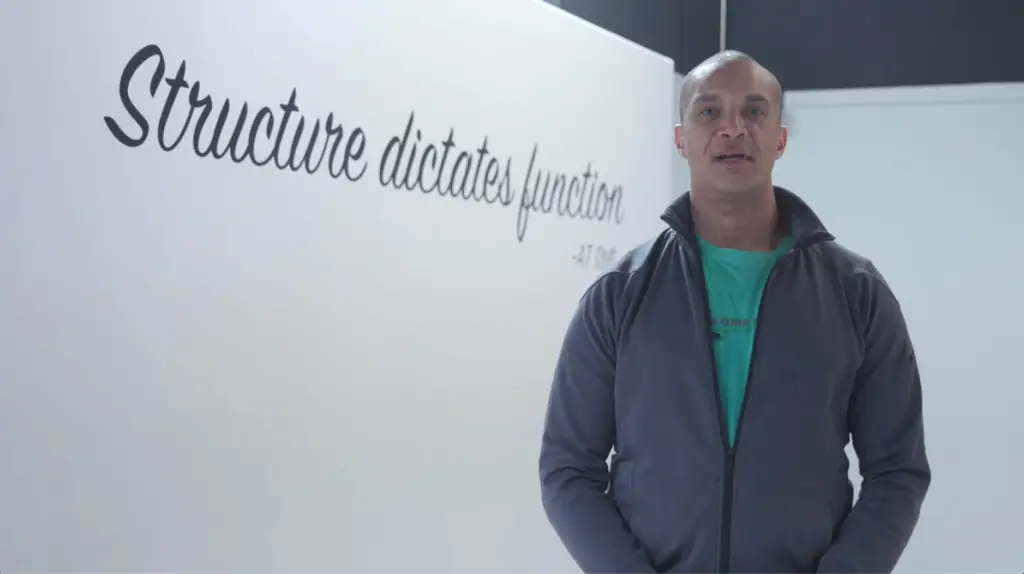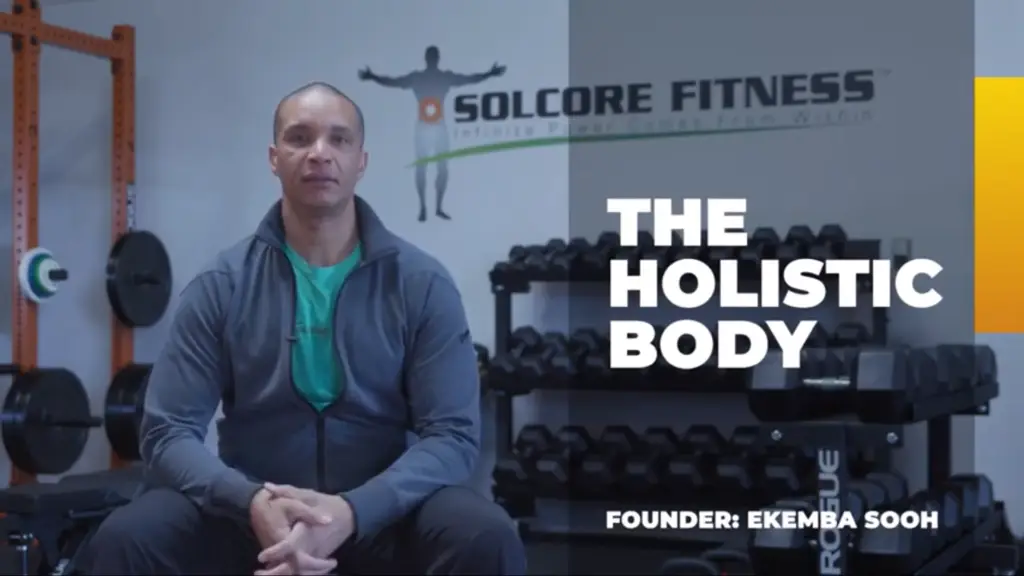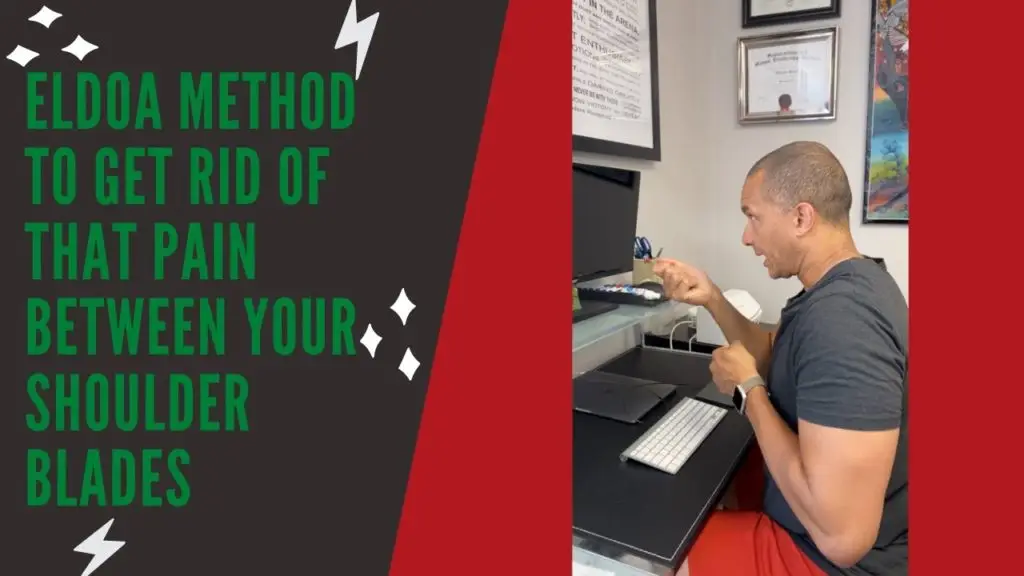
Click on the image to watch the video
Why Sitting Leads To Shoulder Blade and Mid-Back Pain
Modern life forces most of us to sit for hours every day, often leading to lingering mid-back discomfort and pain between the shoulder blades. This pain is not just from immobility, but also from posture habits—forward head, tight pecs, rounding of the upper back, and stressed spinal muscles trying to support the head when it drifts in front of the shoulders.
The “Forward Head” Problem and Spinal Strain
When the head moves from its balanced position over the shoulders to a “forward” posture, the muscles across the back and down to the spine must work harder to hold it up. This chronic strain compresses spine segments and increases tension deep between the shoulder blades—leading to persistent discomfort and reduced mobility.
Science Behind ELDOA: More Than Stretching
The ELDOA method is often described as “stretching,” but it’s truly a powerful strengthening technique that increases space (decoaptation) between vertebrae, boosts blood flow, hydrates discs, and corrects posture. Scientific research confirms the ELDOA method improves pain, range of motion, proprioception, and postural awareness by creating tension specifically at the affected spinal level.
Analogy: Re-Educating Posture Like a Spring
Imagine your spine like a spring—when you sit too long, the coils compress and lose flexibility. ELDOA helps “open up” these coils, restoring natural spacing, and re-educating key muscles (between the shoulder blades and neck) for pain relief and upright posture. Instead of just “stretching” the muscle, you activate global tension with targeted effort and align the spine for true decompression.
How to Use ELDOA to Relieve Shoulder Blade Pain
To break free from postural pain, the ELDOA exercise for the T8-T9 region (middle of the back) is one of the most effective tools. The technique involves a precise warm-up to mentally and physically connect with the mid-back and teach tall, upright posture. It’s not about pampering relaxation; it’s technical, progressive, and teaches the body to stay tall and decompress strain—especially when practiced regularly as part of a holistic routine.
ELDOA: The Ultimate Spine And Joint Exercises
Key Takeaways for Pain Relief and Postural Reset
- Sitting causes a cascade of muscle tension and spinal compressive strain.
- ELDOA creates space, improves strength and posture, and re-educates muscles at the problem area.
- Sustainable relief comes from combining scientific, segmental strengthening and posture correction—not just “moving more,” but moving smarter.
Find out more @
it’s not just working out, it’s building a foundation for a better life.


